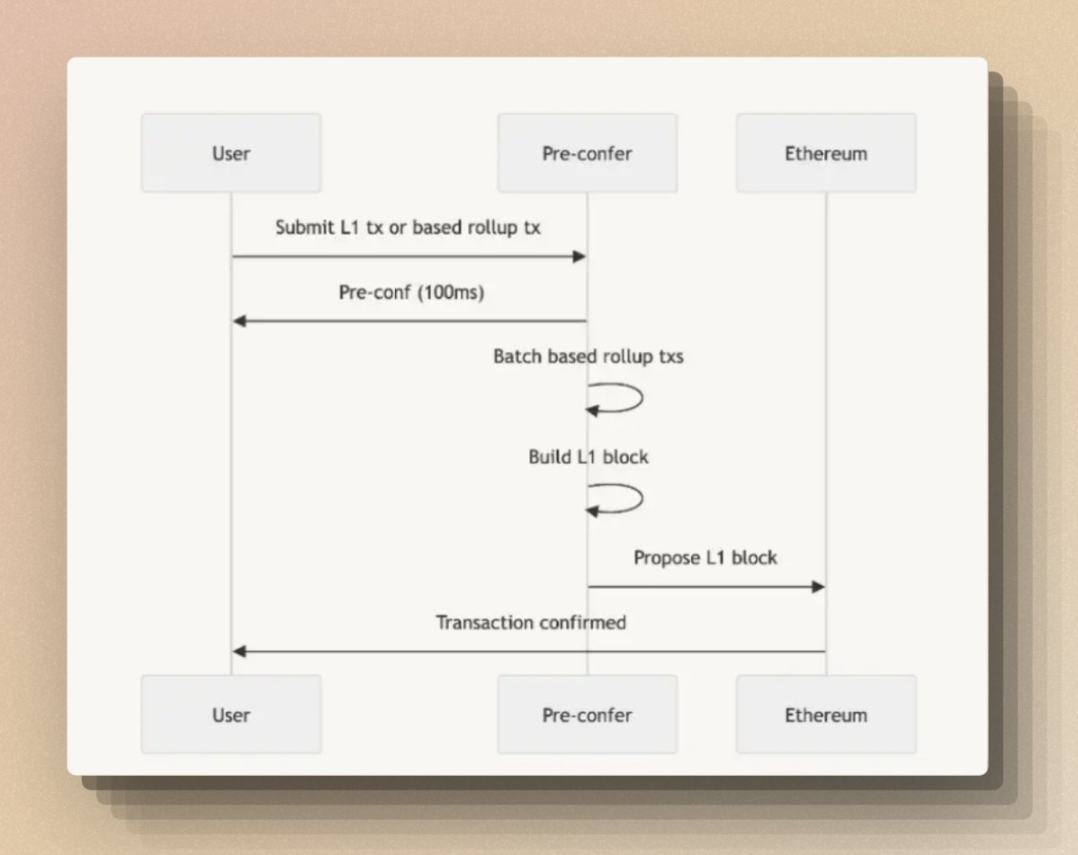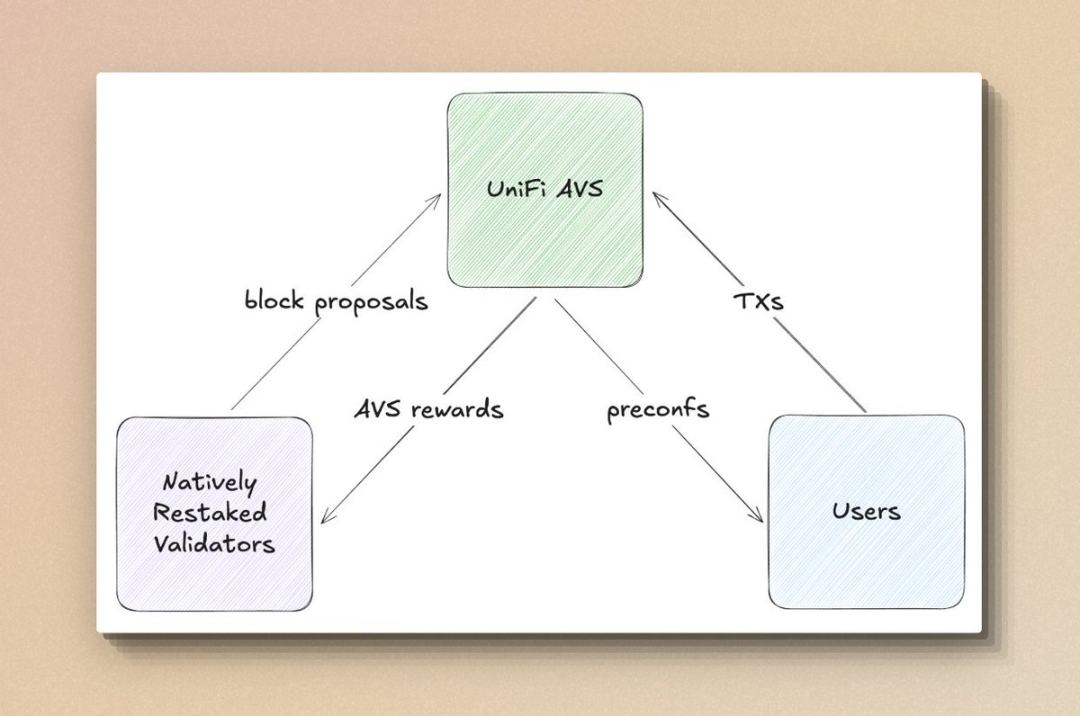Author: Chen Mo cmDeFi
Core Viewpoint: Puffer is utilizing Restaking to build a more efficient Based Rollup solution, a decentralized sequencer, and liberate inter-chain liquidity interactions. Based Rollup and mainstream Rollup will form different ecological patterns within Ethereum.
- Puffer LRT: Ethereum restaking service based on Eigenlayer.
- Puffer UniFi: Based Rollup enhancement solution introducing pre-confirmation technology.
- Puffer UniFi AVS: Using UniFi AVS to construct a highly synchronized application chain ecosystem, reducing liquidity fragmentation.
- The differences between Based Rollup and mainstream Rollup solutions arise from continuous trade-offs in decentralization, efficiency, and interests, to adapt to different types of application scenarios.
Basic Concept of Rollup
Rollup is a technology used to scale blockchains like Ethereum, aiming to allow the blockchain to handle more transactions while keeping fees low. In simple terms, it "packs" a large number of transactions together and processes them off-chain (compared to the mainnet), placing the computation and storage work outside of the Ethereum mainnet (L1). This reduces the burden on the mainnet, but the final results of the transactions will still be submitted to and verified on the Ethereum mainnet, thus maintaining data security and immutability.
Rollup is divided into two main types:
- Optimistic Rollup: Assumes that most participants are honest, and all transactions are presumed correct by default, with verification only occurring when someone challenges it. This method is faster but has a certain challenge period.
- ZK Rollup (Zero-Knowledge Proof): Uses mathematical proofs to ensure the correctness of each transaction, guaranteeing their legitimacy when packing transactions, so no additional challenge period is needed. This method is more secure but technically more complex.
Overall, the core idea of Rollup is "doing a lot of work off-chain and only putting the results on-chain," thereby making blockchain processing faster and cheaper.
This process can be simply broken down into two parts:
- Batch Packing - Increasing transaction volume / throughput
- Transaction Confirmation - Increasing confirmation speed
Based Rollup
The concept of Based Rollup was proposed by Ethereum Foundation researcher Justin Drake in March 2023, primarily targeting an important role between L1 and L2 - the sequencer.
The sequencer is responsible for sorting and packing transactions from L2 to L1, covering both batch packing and transaction confirmation mentioned above. However, most L2 solutions currently use centralized sequencer schemes controlled by a single or a few entities. While this may not pose significant issues in the early stages of industry development, as the capital on each chain grows and infrastructure matures, centralized sequencers will become a "problem that needs to be solved sooner or later."
Currently proposed solutions include two:
- Decentralized sequencers based on L2
- Based Rollup transferred to L1
The main representative of decentralized sequencers based on L2 is Metis, which achieves this by establishing a new robust consensus to make the sequencer network more resilient.
The solution of Based Rollup removes the separate sequencer network mechanism design, transferring the responsibility of transaction sorting from L2 to L1, with Ethereum L1 validators acting as block proposers responsible for transaction sorting. This design does not require re-establishing consensus, fully utilizes existing Ethereum node resources, and avoids the risks posed by centralized sequencers, linking the security level of the sequencer to the Ethereum mainnet.
However, Based Rollup also faces challenges limited by the classic trilemma. While it gains the security of the mainnet, it also means it must rely on the performance of the mainnet (with a block time of about 12 seconds), which significantly degrades transaction confirmation times compared to conventional L2 sequencer solutions.
Analysis of Puffer UniFi Optimizing Based Rollup Solution
To break through this trilemma, new roles or mechanisms must be introduced for balance. Puffer's UniFi aims to introduce "pre-confirmation" to address this issue.
In existing Rollup solutions, users typically receive "soft confirmations" from centralized sequencers. These sequencers can assure users that their transactions will be included in the blockchain after submission. Such soft confirmations fundamentally rely on trust in this centralized power; if this power becomes corrupt, transaction sorting/confirmation cannot be guaranteed fairly.
Puffer UniFi pre-confirmation has the following two characteristics:
- Guaranteed by Ethereum validators: Before block packing, Ethereum mainnet validators make commitments (Pre-conf) regarding pending Rollup transactions - that these transactions will be included in their upcoming proposed block.
- Penalty mechanism: If validators fail to fulfill their pre-confirmation commitments by not including the promised transactions in the block, they will face penalties.
Thus, UniFi bypasses the issue of being constrained by the mainnet's block time in the Based Rollup mechanism, effectively allowing Ethereum mainnet nodes to undertake "extra work" to ensure transaction confirmation efficiency (~100ms).

With the pre-confirmation mechanism, it can greatly enhance the efficiency of transaction confirmations on the mainnet. So, is there still a need for L2 to improve mainnet performance?
Returning to the essence of Rollup, it primarily achieves "batch packing of transactions" -> "rapid confirmation of transactions," which is an expansion in both horizontal and vertical dimensions. Pre-confirmation addresses the issues of rapid and fair transaction confirmation, while batch packing of transactions still needs to be completed through layer two or off-chain, and then the packed transactions are sent to the mainnet for confirmation via the sequencer.
Puffer UniFi AVS
Ethereum nodes undertake "extra work" in the "pre-confirmation" mechanism. How should this extra work and the corresponding penalty mechanism be implemented?
Puffer proposes UniFi AVS, a solution based on EigenLayer that does not introduce other mechanisms or collateral but utilizes Ethereum's "Restaking" to package UniFi into an AVS service. Any validator restaking on EigenLayer can participate in UniFi AVS to provide pre-confirmation services and design corresponding penalty mechanisms within AVS.
Overall, with Restaking and AVS, the implementation of "pre-confirmation" becomes smoother, making it one of the most fitting and practically valuable AVS solutions, contributing to the Based Rollup scheme, which was not easy to achieve before.

Core Value
Using UniFi AVS to build application chains will become an upgrade solution for Based Rollup, compared to other Rollups:
- Decentralized sorting based on L1
- Integration of pre-confirmation technology to enhance transaction confirmation speed
- Creating yields for Restaking
- Synchronized composability
Synchronized composability is one of the core features UniFi uses to address fragmentation issues. In Ethereum's current multi-Rollup environment, different Rollups operate independently, leading to dispersed liquidity and users. Additionally, asset and contract interactions between different Rollups require tools like cross-chain bridges, which not only increase complexity but also incur high costs and security risks.
Since UniFi is based on L1 decentralized sorting, with Ethereum mainnet nodes acting as the "master sequencer," it allows different Rollups (based on UniFi) to interact within the same block without needing cross-chain bridges. This way, users can seamlessly operate between different Rollups and application chains within the UniFi ecosystem. Through this approach, UniFi provides users with a smooth experience similar to a single chain, effectively reducing liquidity fragmentation issues, which aligns with the ultimate goal of chain abstraction. Its advantage lies in a more native and straightforward implementation without the need for additional consensus and restrictions (such as establishing a new consensus layer to aggregate liquidity and user demand).
Conclusion
In summary, the entire UniFi business depends on whether Based Rollup is a necessary Rollup solution.
From the current state of L2, most solutions are actually more centralized than users perceive; however, this centralization issue does not significantly impact user interests in the short term. Similarly, whether this issue is resolved in the short term will not bring about a wealth effect, as it is far removed from the user end. The reason this issue is not prominently exposed is that no application has been directly affected by the degree of centralization of the sequencer, just like the wealth stories during the inscription period of the Bitcoin ecosystem, where all the stories of sudden wealth were completed under a very centralized indexing background.
However, from a long-term perspective, discussing decentralized sequencers while considering liquidity and experience fragmentation is an inevitable matter. To illustrate this, we can draw some comparisons:
Based Rollup is currently a more Ethereum-mainnet-friendly solution; it resembles an "affiliated" Rollup of the Ethereum mainnet, or can be described as Ethereum's loyal soldiers, which can be infantry, cavalry, or artillery. The scheduling and communication between barracks are directly managed by Ethereum, adhering to Ethereum's fairest system, without the need for a third department to intervene, eliminating the risks of miscommunication and intentional malfeasance.
In contrast, the mainstream Optimistic Rollup is a more "delegated" Rollup of Ethereum, akin to the autonomy of feudal lords. They flourish independently, building their preferred cities and systems, with the fairness of these systems depending on the lords themselves. Meanwhile, communication between the lords requires an additional department for scheduling and regulation, which is "chain abstraction." To control these lords, the chain abstraction department must be strong enough to both manage the lords and ensure it does not become corrupt.

The controversy between these two solutions lies in whether Rollup should return value to Ethereum or be autonomously flourishing. Being closer to Ethereum provides greater security advantages, saving many decentralization costs while possessing natural synchronized composability. Autonomous governance means operators can capture significant benefits but must also invest heavily in building decentralized security and rely on external composability.
The inclusiveness and freedom of blockchain ensure that both solutions will coexist, stemming from the continuous trade-offs in decentralization, efficiency, and interests to adapt to different types of application scenarios. This exploration will continue, and only through ongoing technical corrections can developers' ideas hope to create a new future.
免责声明:本文章仅代表作者个人观点,不代表本平台的立场和观点。本文章仅供信息分享,不构成对任何人的任何投资建议。用户与作者之间的任何争议,与本平台无关。如网页中刊载的文章或图片涉及侵权,请提供相关的权利证明和身份证明发送邮件到support@aicoin.com,本平台相关工作人员将会进行核查。




